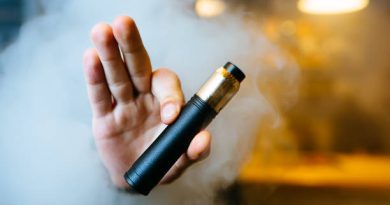What Medications Are Used To Treat Dry Eyes
There are several causes of dry eyes, including allergic reactions, eyelid inflammation, cornea inflammation, aging, reduced tear production, and so on. Suppose you are suffering from dry eyes; you must know that whatever medications will be prescribed to you will greatly depend on the root cause.
You can click on this link for more information on symptoms associated with some of the causes of dry eyes.
Meanwhile, we’ve written about some medications and procedures that have been used for dry eyes.
Antibiotics
Once the edge of your eyelids is inflamed, it can stop the oil production from the oil glands within your eyes, which leads to dry eyes. For this kind of dry eye caused by eyelid inflammation, your eye doctor may recommend antibiotics to help lessen the inflammation, which can either be taken orally, used as ointments, or as eye drops.
Immune-Suppressing Medicine
If you have cornea inflammation which is an inflammation usually seen on the surface of the eyes, it can be managed with eye drops containing immune-suppressing medicine like corticosteroids or cyclosporine. However, corticosteroids are not recommended to be used for a long period because of their side effects.
Eye Inserts
If your dry eyes symptoms are severe and you’ve tried artificial tears, and they don’t seem to be working, you can try eye inserts. They look like a clear grain of rice and work like artificial tears. One type of eye insert is the sacrist (hydroxypropyl cellulose) which should be inserted between the eyelid and eyeballs. Once you insert the eye insert and it dissolves, a substance is released that helps lubricate the eye.
Tear-Stimulating Medicine
This kind of medicine helps enhance tear production. They are often called cholinergic, which can be either pilocarpine or cevimeline and are available as gels, eye drops, or pills. However, tear-stimulating machines may cause side effects like sweating.
Autologous Blood Serum Drops
Autologous blood serum drops are made using your blood. They are usually recommended if your dry eyes symptoms are very severe and not responding to other kinds of treatment. It is made using red blood cells from your blood samples mixed with a salt solution.
Nasal Spray
Recently, a drug known as Varenicline or Tyrvaya has been approved for treating dry eyes. It is administered through a nasal spray, which means it’s sprayed through the nose. You are advised to spray varenicline once into each nostril twice daily to help increase tear production.
Other Treatment Procedures for Dry Eyes
- Keeping your tear ducts closed
Your eye doctor may recommend you close your tear ducts to reduce the way tears leave your eyes. Your tear ducts can either be closed slightly or totally to drain the tears away.
Tear ducts can be plugged with removable tiny punctual plugs (silicone) or with a procedure that makes use of heat. The latter is a more permanent solution known as thermal cautery.
- Use of unique lenses
There are contact lenses specially designed contact lenses for dye eyes known as scleral or bandage lenses. They are usually recommended for severe dry eye conditions and can trap moisture and protect the eyes’ surface. You can ask your eye doctor for special contact lenses for your dry eyes.
- Clearing blocked oil glands
Another procedure that is effective for dry eyes condition is the unblocking of oil glands. This can be done by the use of warm compresses, eye masks, or the use of a thermal pulsation machine.
- Use of Light Therapy and Eyelid Massage
If your dry eyes are severe, you can opt for a procedure known as intense-pulse light therapy done alongside eyelid massage. This therapy can help relieve dry eyes symptoms
Non-Prescription Medications Used to Treat Dry Eyes
There are different kinds of nonprescription medications used to treat dry eyes, like ointments, gels, and eye drops, also known as artificial tears. Artificial tears may just work for you if you are treating mild dry eye symptoms.
You can either use them once or several times daily, depending on your eye doctor’s recommendation. However, there are factors to consider before going for eye drops, like preservatives or preservative-free eye drops. Preservative-free eye drops are usually recommended if you are allergic to preservatives or if you’ll be using eye drops for a long period to avoid dependency.
With the different medications available to treat dry eyes, you should always seek recommendations from your eye doctor before using any. This is to avoid taking any wrong medication that would further worsen your dry eye condition.




